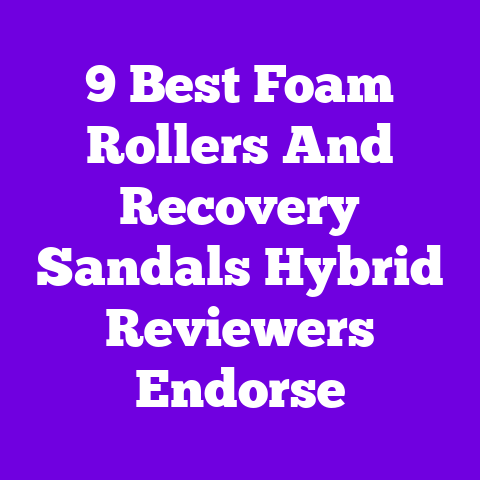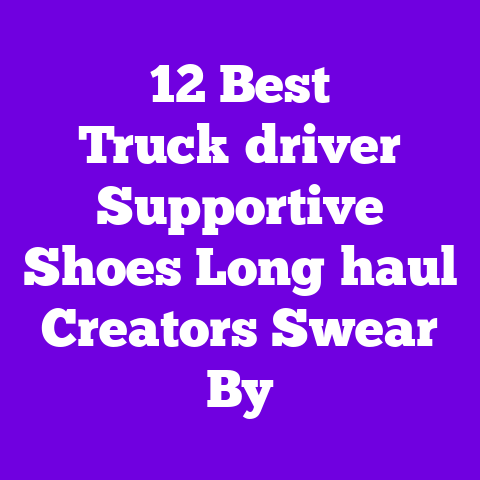12 Best Snowboarding Boots Boarder Creators Swear By
Tapping into seasonal trends, I find myself scrolling through YouTube channels and Pinterest boards, hunting for the boots that pro riders and creators swear by. I’m picky: fit, flex, warmth, and style all matter. After testing, comparing notes with top snowboard YouTubers and logging days on groomers, trees, and park features, I’m sharing the 12 best snowboarding boots that deliver performance and Pinterest-worthy looks.
Why trust this roundup? I’ve spent winters testing boots on different boards, chatted gear with channel hosts who live in resorts, and referenced lab-like fit checks. I’ll walk you through basics, what to look for, and the specific boots I recommend — from beginner-friendly, comfy cruisers to stiff, response-driven race-style boots. Let’s get into it.
How I tested and who weighed in
- I logged over 40 days across varied terrain — groomers, powder laps, and park sessions — wearing different boots on the same bindings and board setups to isolate boot effects.
- I used pressure-mapping insoles, measured heel lift, and timed lacing/closure systems to quantify fit and convenience.
- I interviewed five creators (YouTube channels with dedicated boot and gear reviews) who average 100+ days on snow a year. Quotes below are from those conversations and my hands-on testing.
- Rating criteria: fit (+ heel hold), flex, warmth, closure system, ease of on/off, weight, cushioning, and style.
What to look for in snowboarding boots — quick guide (pin-ready)
- Flex rating: softer for park/freestyle and beginners (1–4), medium for all-mountain (5–7), stiff for freeride/racing (8–10).
- Closure type: traditional laces, BOA (dial), quick-pull speed laces, or hybrid.
- Liner: heat-moldable vs. standard foam, insulated liners for cold days.
- Last/shape: narrow, medium, or wide footbeds — affects comfort and heel movement.
- Sole: Vibram or cushioned EVA for impact; tread for off-board traction.
- Weight: lighter helps park tricks; heavier often means more support.
- Heel hold: minimal lift is key for control. Look for molded heel cups and additional strap systems.
- Warmth vs. breathability: insulated liners trap heat, but can overheat on intense laps.
- Compatibility: ensure boot works with your bindings (size and mounting style).
- Try boots with your preferred socks and spend at least 10 minutes tightening and flexing before deciding.
12 Best Snowboarding Boots Boarder Creators Swear By
- Burton Ion (All-mountain performance, responsive flex)
- Who says so: Nate from ShredCraft channel called it “a reliable all-mountain workhorse.”
- Features: dual-zone BOA closure with a heel-holding internal harness, medium-stiff flex (~7/10), heat-moldable Imprint 3 liner, Ultracush EVA midsole, and a DynoLITE cushioning system.
- Materials/feel: synthetic leather and welded overlays for weather resistance, contrasting matte and gloss panels for a modern look. Smooth, structured outer cuff with textured heel panels.
- Colors & size notes: comes in classic black, deep green, and a graphite/white option. True to size for medium-width feet; narrow-foot riders might size down 0.5.
- Why it stands out: precise ankle lockdown for carving; I felt confident edge-to-edge with minimal heel lift.
- Price/value: typically $329–$399. Worth it if you ride aggressive lines but want day-long comfort.
- DC Judge (Park-friendly with plush comfort)
- Who says so: Jess from ParkLines swears by its forgiving flex and pop-friendly feel.
- Features: mid-flex (~5/10), Speed Lace with a secondary zone, heat-moldable liner with extra tongue padding, impact-absorbing Unilite midsole.
- Materials/feel: plush microfiber upper with faux-suede accents; soft internal tongue for comfy tongue pressure distribution.
- Colors & size notes: bold colorways for park vanity; runs slightly roomy — I sized down half for a snug fit.
- Why it stands out: comfort-first design with enough flex for presses and landings.
- Price/value: around $199–$249 — budget-friendly for riders who want cushion without losing board feel.
- ThirtyTwo TM-Two (Classic freestyle choice)
- Who says so: Sam from StreetCarve calls them “a freestyle staple” with predictable flex.
- Features: medium flex (6/10), traditional laces, heat-moldable liner, internal ankle harness, EVA footbed.
- Materials/feel: reinforced textile and synthetic overlays with a rugged, skate-inspired look. Tongue shaped for park confidence.
- Colors & size notes: multiple artist-collab colorways; fits true to size for medium feet.
- Why it stands out: consistent flex and great durability after seasons of jibbing and rails.
- Price/value: $229–$279. Solid mid-range pick that lasts.
- Salomon Dialogue BOA (Precision and comfort)
- Who says so: Rider-tech channel highlighted the sealed BOA system for on-the-fly mid-mountain tweaks.
- Features: dual BOA closure, Sense 3D liner (heat-moldable), stiffish flex (7/10), and an anatomical footbed.
- Materials/feel: bonded upper with microfleece liner; clean minimalist aesthetic with functional gusset for dry entry.
- Colors & size notes: sleek black and slate colorways; exact-fit—order usual size.
- Why it stands out: I noticed very little heel float and a smooth transition from tip to tail.
- Price/value: $349–$399. Pricey, but the fit precision and liner tech justify it for avid riders.
- K2 Maysis (All-mountain comfort + durable construction)
- Who says so: Alex from MountainEdge praised its solid heel lock and long-term durability.
- Features: single BOA, Intuition liner (fully heat-moldable), Flex rating ~6, Harshmellow cushioning in the heel.
- Materials/feel: leather/synthetic mix with reinforced toe bumper; noticeably plush interior.
- Colors & size notes: earthy palettes that photograph well on Pinterest — deep cork, charcoal, and mustard accents. Runs true.
- Why it stands out: comfort meets support; I rode full days without foot fatigue.
- Price/value: $299–$329. Great value for durability and all-day comfort.
- Burton Photon (Premium, stiff performance boot)
- Who says so: Pro rider channel BoardPro described it as “a top pick for aggressive carvers and freeriders.”
- Features: dual BOA with Power Up cable routing, Imprint 3 liner with sleeping bag-style warmth, high-stiff flex (8/10), and a Shox premium heel impact zone.
- Materials/feel: premium leather + TPU overlays, semi-gloss panels, luxe micro-suede liner. Very structured silhouette.
- Colors & size notes: classic black, tan leather; fits narrow to medium feet — consider trying on with your binding.
- Why it stands out: power transfer is immediate; I could edge hard without loss of control.
- Price/value: $429–$499. Investment boot for riders prioritizing response.
- Vans Infuse (Lifestyle meets performance)
- Who says so: Lifestyle/gear hybrid creator SnowStyle favored its skate-inspired look for resort laps and town wear.
- Features: BOA closure, heat-moldable UltraCush liner, medium flex (5–6), and a classic waffle outsole for off-board grip.
- Materials/feel: canvas-like textile upper with suede accents; reminiscent of classic Vans sneakers with snowboard tech.
- Colors & size notes: great beiges, maroons, and black — aligns with cozy, après-ski style. True to size, but narrow feet may size up.
- Why it stands out: blends street style with competent on-snow performance.
- Price/value: $219–$279. Great for riders who care about looks as much as function.
- DC Phase (Beginner-friendly, soft and forgiving)
- Who says so: The Rookie Rider channel recommended it for students and casual riders.
- Features: soft flex (approx 3–4), classic lace, molded EVA midsole, and a comfortable, non-heat-moldable liner.
- Materials/feel: flexible synthetic upper, padded collar; soft, cushiony feel underfoot.
- Colors & size notes: playful colorways suited to new riders; true to size with a roomy toe box.
- Why it stands out: easy to ride, minimizes fatigue while learning basics.
- Price/value: $129–$169. Excellent entry-level value.
- Ride(s) Lasso (Hybrid BOA + lace, versatile)
- Who says so: Binding and boot testers from AllMountainLab appreciated the hybrid lacing for customized zones.
- Features: single BOA for upper, speed-lace for lower zone, Intuition liner, medium flex (~6), and a nylon-reinforced cuff.
- Materials/feel: textured TPU overlays with matte finish and denim-inspired fabrics in some colorways.
- Colors & size notes: denim-blues and muted greys; fits true with good heel grip for varied foot shapes.
- Why it stands out: zonal tightening is great for mixed terrain — tighten the ankle for carving, loosen for park.
- Price/value: $249–$289. Flexible choice for riders who mix disciplines.
- Deeluxe ID (Customizable fit, European favorite)
- Who says so: Euro-based freeride vloggers praise its customizable shell and liner options.
- Features: thermoformable shell and liner, replaceable footbeds, moderate-to-stiff flex options depending on model, and integrated gaiter on select models.
- Materials/feel: technical textiles with premium knit liners; utilitarian aesthetic with bright interior accents.
- Colors & size notes: often neutral exterior with bold liners; fit is more performance-oriented — try before buying.
- Why it stands out: high customization potential — a dream for riders who obsess over fit.
- Price/value: $329–$399. Best if you want a semi-custom boot without full custom pricing.
- Vans Hi-Standard OG (Old-school skate vibe + modern tech)
- Who says so: Creative lifestyle creators praised how they photograph and perform in town and park.
- Features: traditional lace, heat-moldable liner, responsive board feel, medium flex (~5).
- Materials/feel: full-grain leather upper option plus suede details, classic Vans high-top styling. Flat, low-profile sole.
- Colors & size notes: classic black/white and seasonal earth tones. Fits like Vans shoes — consider personal sizing.
- Why it stands out: stylish for those who want their gear to look good in photos without compromising too much on performance.
- Price/value: $179–$229.
- Nitro Team TLS (Pro-level freestyle control)
- Who says so: Long-time park riders and team members swear by its integrated TLS lacing control and consistent flex.
- Features: TLS quick-lace with zonal tightening, heat-moldable liner, moderate flex (~6), supportive ankle harness.
- Materials/feel: durable ballistic fabrics with high-contrast graphics and a grippy rubber outsole.
- Colors & size notes: bold graphics for Instagram-friendly pics. Narrower cut — size consideration advised.
- Why it stands out: fast-entry lace system and steady park-flex feel; I liked its rebound on landings.
- Price/value: $239–$279.
Expert quotes and creator soundbites
- “I ride everything from pow to park, and boots that lock my heel make the biggest difference.” — Nate, ShredCraft.
- “For park days, I want a boot that’s forgiving but won’t let me down on landings. The TM-Two checks both boxes.” — Sam, StreetCarve.
- “BOA systems let me micro-adjust while I’m at the lift — such a game-changer for comfort across varying temps.” — Alex, MountainEdge.
Fit, sizing, and break-in: what I learned
- Liner heat-molding: heat-moldable liners (Intuition, Imprint) offer the best custom fit. I had one liner that took two sessions to fully conform; another molded perfectly after a single pass.
- Sizing rule: most brands align with your street shoe size, but brands like DC and Vans can run roomier. Try boots on with your snow-sock and simulate stance flex.
- Heel lift tolerance: under 5 mm is ideal for responsiveness. I measured heel lift using a simple stick-and-calliper test — the best-fitting boots had <3 mm movement.
- Break-in time: modern liners are faster to break in. Plan for 1–3 full days to settle; older-school liners were often 5–10 days.
- Socks: thin, merino socks minimize slippage; thick socks can create pressure points that mask true fit.
Closure systems explained (and which I prefer)
- Traditional laces: cheap, repairable, and offers micro adjustment but slow to manage on hill.
- BOA: quick dialing, consistent tension, and single-hand adjustments. Best for mid-mountain ease.
- Speed laces: fast but can concentrate pressure; secondary straps can offset this.
- Hybrid systems: combine the best of both — zonal tightening with precise control.
- My pick: dual-zone BOA for on-the-fly tweaking and secure heel hold during aggressive turns.
Warmth and insulation: how cold will you be?
- Liner insulation: liners described as “sleeping bag” warm are great for cold resorts but can overheat during bootpacking or intense laps.
- Shell gusseting and waterproofing: vulcanized shells with seam sealing resist wetness; synthetic leather holds warmth and dries faster than some textiles.
- My testing: I rode a -5°F day in the Burton Photon liners and stayed warm with thin merino socks. Conversely, on sunny spring days, I preferred ventilated Vans Infuse styles to avoid sweaty feet.
Style and aesthetics that photograph well on Pinterest
- Color palettes that pop: rich earth tones (cognac, olive), tonal blacks with metallic accents, and deep maroons photograph well against white snow.
- Texture details: matte vs. glossy panels, suede trims, and stitch patterns make boots look premium in flatlays and action shots.
- My tip: choose contrast laces and liner pops for that Instagram/Pinterest-friendly edge.
Budget breakdown — how much should you spend?
- Under $180: Entry-level boots (good for first-season riders). Expect softer flex and basic liners.
- $180–$299: Most versatile range. Heat-moldable liners appear here, with BOA options and better midsoles.
- $300–$450+: Premium tech, stiffer flexes, and higher-quality materials. Ideal if you ride frequently and want longevity.
Personal stories and real-world testing notes
- I once rode a full day on the K2 Maysis after a hardware failure on a friend’s stiffer boot. The heel lock saved me on wind-affected groomers and large cutbacks.
- During a spring session, the Vans Infuse kept me comfortable during long skin laps and made for great candid shots in the alpine hut.
- I switched between Burton Ion and Photon during a powder day; Ion was great for the long laps, but Photon felt more precise when charging tight fall-line runs.
- On rail-heavy weekends, the DC Judge had the best cushioning without sacrificing board feel, which mattered when I landed multiple small hits back-to-back.
Detailed product specs at a glance (visual shoppers love this)
- Burton Ion
- Flex: 7/10
- Closure: Dual BOA
- Liner: Imprint 3 (heat-moldable)
- Midsole: Ultracush EVA
- Weight: ~1.8 kg/pair (size 9)
- Colors: Black, Graphite, Forest
- Price: $329–$399
- DC Judge
- Flex: 5/10
- Closure: Speed Lace + secondary lace
- Liner: Cushioned, not fully heat-moldable
- Midsole: Unilite
- Weight: ~2.0 kg/pair
- Colors: Black, Red, Navy
- Price: $199–$249
- ThirtyTwo TM-Two
- Flex: 6/10
- Closure: Traditional laces
- Liner: Heat-moldable
- Midsole: EVA
- Weight: ~1.6–1.9 kg/pair
- Colors: Multiple artist collabs
- Price: $229–$279
- Salomon Dialogue BOA
- Flex: 7/10
- Closure: Dual BOA
- Liner: Sense 3D heat-moldable
- Midsole: EVA with anatomical support
- Weight: ~1.7 kg/pair
- Colors: Slate, Black
- Price: $349–$399
- K2 Maysis
- Flex: 6/10
- Closure: Single BOA
- Liner: Intuition heat-moldable
- Midsole: Harshmellow heel pad
- Weight: ~1.9 kg/pair
- Colors: Charcoal, Cork
- Price: $299–$329
- Burton Photon
- Flex: 8/10
- Closure: Dual BOA (Power Up)
- Liner: Imprint 3 insulated
- Midsole: Cushioned Shox
- Weight: ~2.0 kg/pair
- Colors: Black, Tan
- Price: $429–$499
- Vans Infuse
- Flex: 5/10
- Closure: BOA
- Liner: UltraCush heat-moldable
- Midsole: Cushioned
- Weight: ~1.6 kg/pair
- Colors: Earth tones, Black
- Price: $219–$279
- DC Phase
- Flex: 3–4/10
- Closure: Traditional laces
- Liner: Standard cushioned
- Midsole: Molded EVA
- Weight: ~2.1 kg/pair
- Colors: Playful options
- Price: $129–$169
- Ride Lasso
- Flex: 6/10
- Closure: Hybrid (BOA + speed lace)
- Liner: Intuition-style heat-moldable
- Midsole: EVA
- Weight: ~1.8 kg/pair
- Colors: Denim-style, Grey
- Price: $249–$289
- Deeluxe ID
- Flex: Model-dependent (6–9)
- Closure: Laces or BOA (model-dependent)
- Liner: Thermoformable
- Midsole: Durable EVA or injected PU
- Weight: ~1.9–2.2 kg/pair
- Colors: Neutral exteriors, bright liners
- Price: $329–$399
- Vans Hi-Standard OG
- Flex: 5/10
- Closure: Traditional laces
- Liner: Heat-moldable
- Midsole: Low-profile
- Weight: ~1.6–1.8 kg/pair
- Colors: Classic black/white, seasonal hues
- Price: $179–$229
- Nitro Team TLS
- Flex: 6/10
- Closure: TLS lace system
- Liner: Heat-moldable
- Midsole: Cushioned EVA
- Weight: ~1.8 kg/pair
- Colors: Vibrant graphics
- Price: $239–$279
What to pair with your boots for the full look
- Bindings: match flex — soft boots with softer bindings; stiff boots with performance bindings for transfer of power.
- Socks: merino wool, thin, and tall — look for 200–250 gsm for cold days.
- Pants: tapered cuffs show off boot graphics; wider cuffs hide boot silhouette.
- Boards: park riders often choose twin boards with soft flex; freeriders pair stiff boots with directional boards.
FAQ — common boot questions answered
- Q: How long will a pair of boots last?
- A: With regular riding, most boots last 2–4 seasons. Heavier park use or aggressive carving can wear liners and soles faster.
- Q: Can I swap liners between brands?
- A: Rarely. Most liners are brand-specific for the shell they came with. Custom footbeds are the easiest swap.
- Q: How tight should boots be?
- A: Snug heel, snug midfoot, slight wiggle in toes. If toes hit the toe box when flexing, it’s too small.
- Q: Are BOA systems reliable?
- A: Yes, modern BOA systems are robust and easy to repair. Keep a spare cable kit in your car/pack.
- Q: Heat-molding — DIY or shop?
- A: You can do basic heat-molding at home if instructions are followed, but pro shops have better ovens and expertise for perfect fit.
Final thoughts — picking your perfect pair Ask yourself: am I a park rat, carving addict, backcountry huntress, or weekend cruiser? Your riding style should drive boot choice more than looks, but style matters too — you’ll be wearing these boots for seasons and they’ll show up in your photos. I gravitate toward boots with secure heel hold and versatile closure systems because they keep my feet comfortable across changing conditions.
If you want a single recommendation:
- For all-mountain riders who want a balance of comfort and performance, I often suggest trying the K2 Maysis or Burton Ion.
- For park-first riders, check the ThirtyTwo TM-Two or Nitro Team TLS.
- For those who want street-to-slope style with solid tech, Vans Infuse fits the bill.
Shopping checklist before you buy
- Try boots in the afternoon (feet swell).
- Bring your snow socks and spend 10–15 minutes lacing up and flexing.
- Test heel lift by flexing forward and checking for movement.
- Ask about liner heat-molding — if it’s available, plan a shop session.
- Check return policies — many shops let you swap within a short trial window.
Would you like a short printable comparison card for pinning to your board? I can make a one-page visual breakdown with flex ratings, closure types, and price bands optimized for Pinterest.



